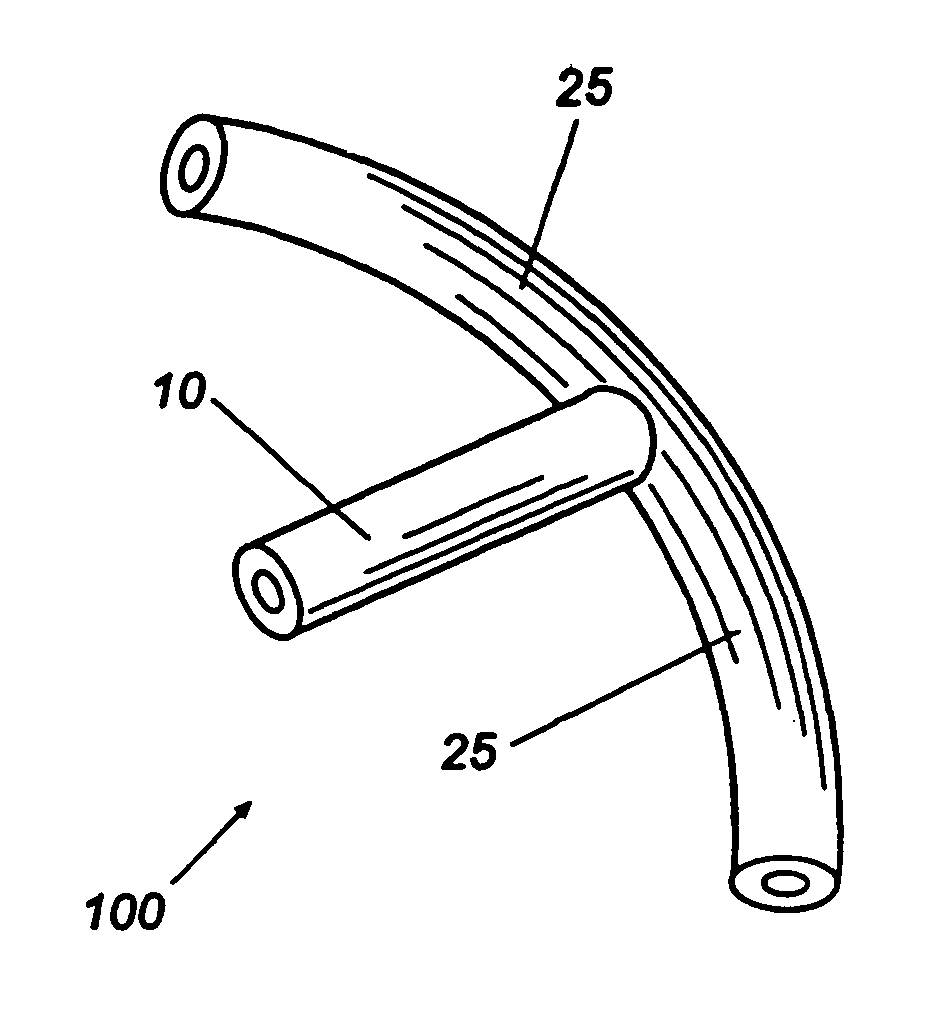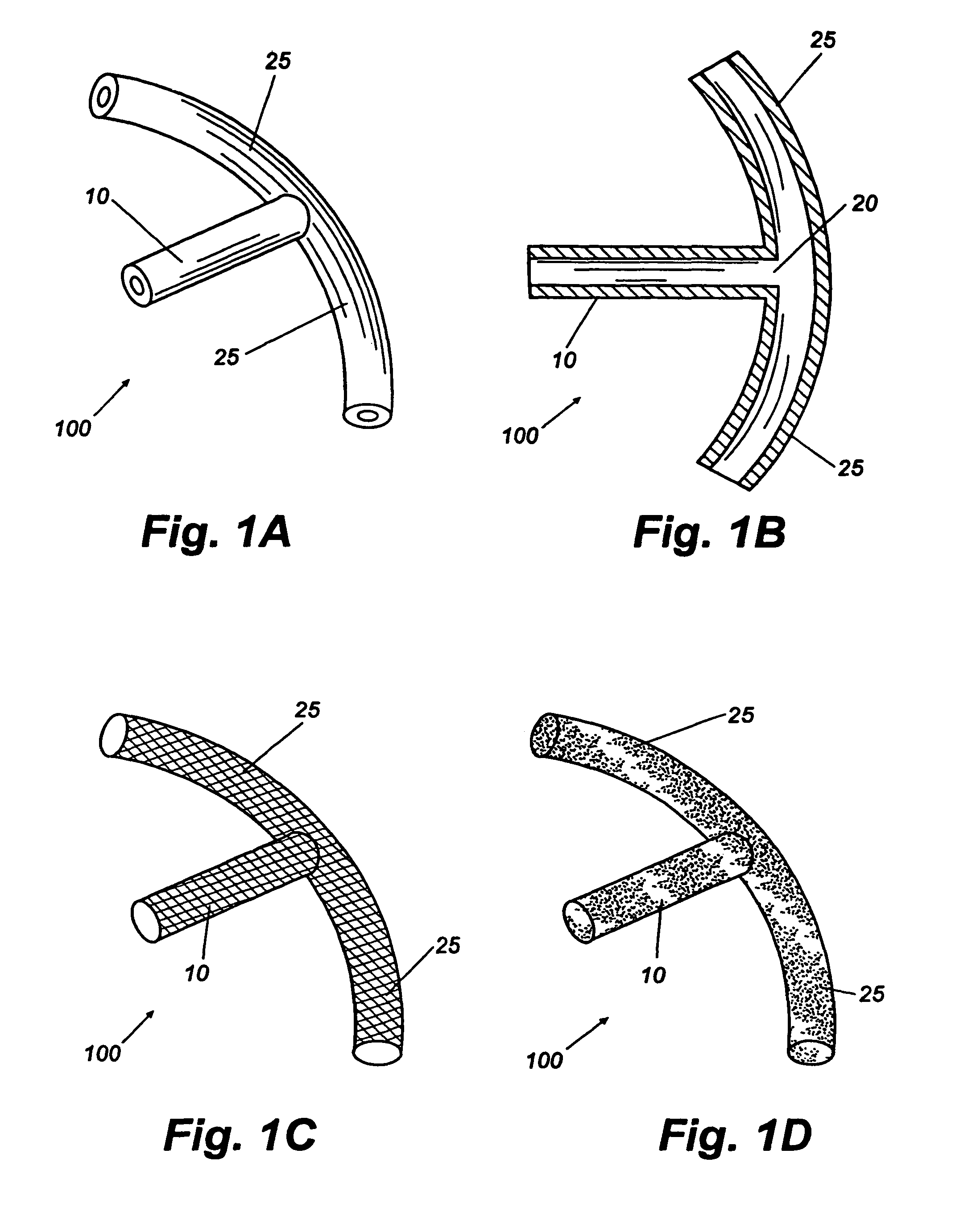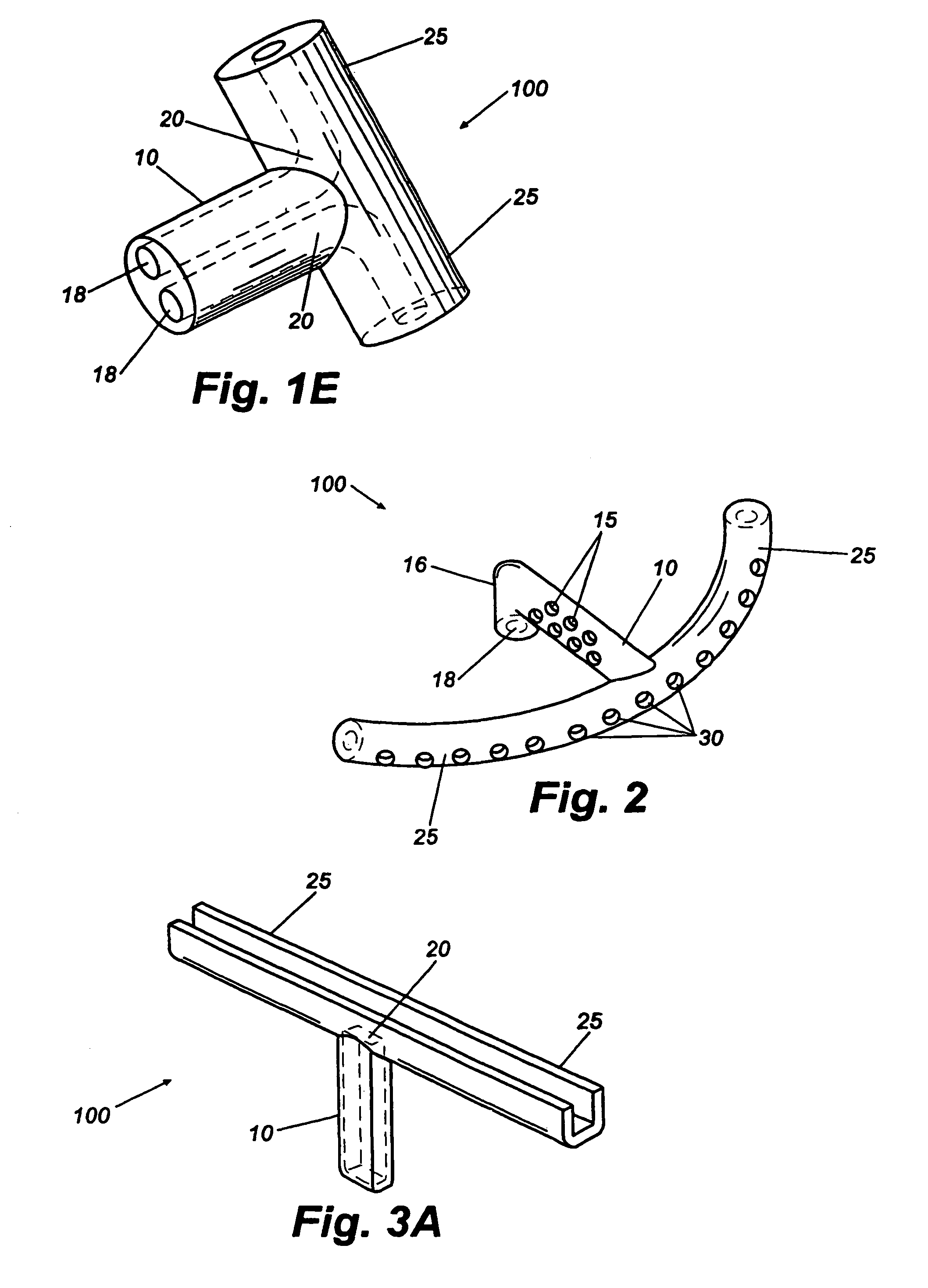Shunt device and method for treating glaucoma
a shunt device and glaucoma technology, applied in the field of glaucoma surgery, can solve the problems of glaucoma being a significant public health problem, affecting so as to facilitate the normal physiologic pathway and increase the egress of aqueous humor
- Summary
- Abstract
- Description
- Claims
- Application Information
AI Technical Summary
Benefits of technology
Problems solved by technology
Method used
Image
Examples
Embodiment Construction
[0044]The present invention provides an aqueous humor shunt device to divert aqueous humor in the eye from the anterior chamber into Schlemm's canal, in which the shunt device comprises a distal portion having at least one terminal aspect sized and shaped to be circumferentially received within a portion of Schlemm's canal, and a proximal portion having at least one terminal aspect sized and shaped to be received within the anterior chamber of the eye, wherein the device permits fluid communication between the proximal portion in the anterior chamber to the distal portion in Schlemm's canal. Fluid communication can be facilitated by an aqueous humor directing channel in either the proximal or distal portions, as described below. Fluid communication can also be facilitated by a wicking function of a solid proximal or distal portions of the device, for example.
[0045]The present invention also provides embodiments of an inventive shunt comprising a body of biocompatible material of a s...
PUM
 Login to View More
Login to View More Abstract
Description
Claims
Application Information
 Login to View More
Login to View More - R&D
- Intellectual Property
- Life Sciences
- Materials
- Tech Scout
- Unparalleled Data Quality
- Higher Quality Content
- 60% Fewer Hallucinations
Browse by: Latest US Patents, China's latest patents, Technical Efficacy Thesaurus, Application Domain, Technology Topic, Popular Technical Reports.
© 2025 PatSnap. All rights reserved.Legal|Privacy policy|Modern Slavery Act Transparency Statement|Sitemap|About US| Contact US: help@patsnap.com



